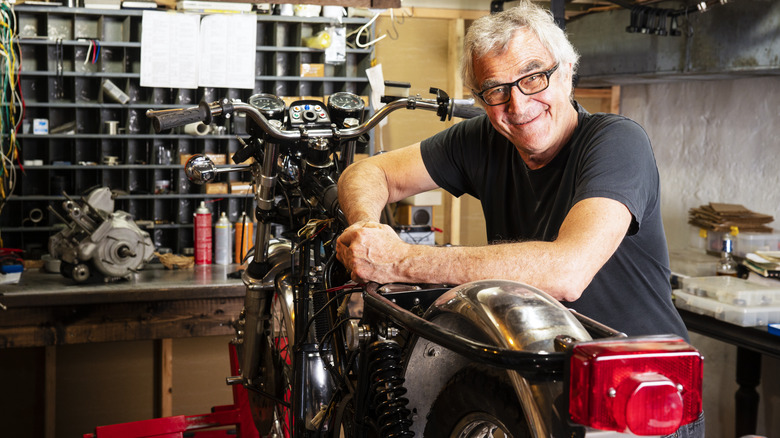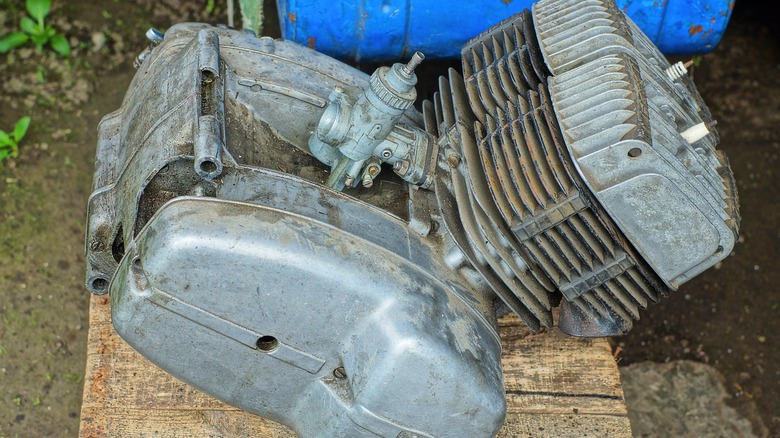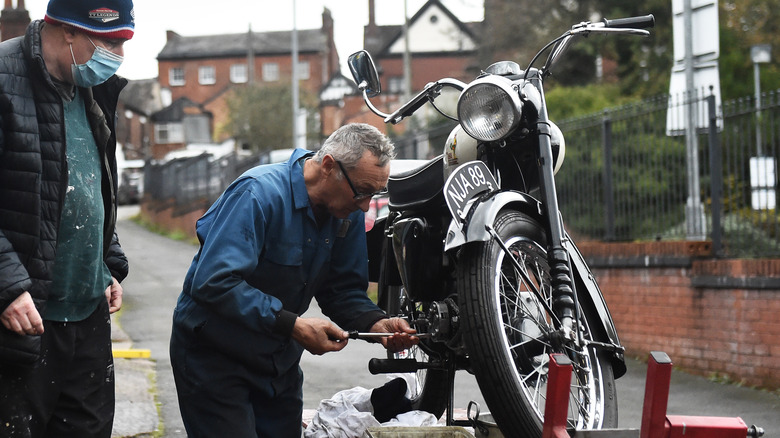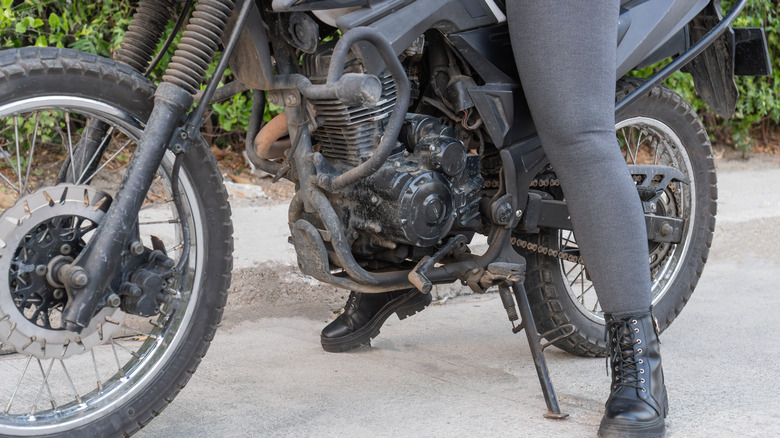Can You Do An Engine Swap On A Motorcycle?
Motorcycles grow more powerful with each passing year, with engines like Indian's Power Plus 108 and Harley-Davidson's new 2.1-liter Screaming Eagle IV V-twin putting out 122 and 130 horsepower, respectively. Automotive engine replacements like Chevy LS engine swaps are quite common, but if you're tempted to boost your motorcycle's power by replacing the stock engine with something bigger, you've probably wondered if this is a manageable job, and what is involved?
One of the most significant differences between a car and motorcycle engine swap — other than the number of wheels on the vehicle involved — is the equipment needed to remove the old engine and install the new one. For cars, trucks, and SUVs, an engine hoist is a necessity, but many motorcycle engines can be removed and replaced by one or two strong people without any special equipment. That doesn't mean it's full speed ahead with any old motorcycle engine swap project, though. There is a bit of research and preparation you'll need to do before starting a motorcycle engine swap to make sure you end up with a safe, reliable ride.
Size matters when it comes to engine swaps
One of the most important considerations is engine size. You'll either have to find a motor with the same dimensions as your old one, or modify the frame to make room for a bigger engine. You may also have to install or fabricate new motor mounts. Before buying a new engine for your bike or starting to disassemble your ride, measure everything carefully to try and get an idea of what outfitting the engine swap will require. It's also important to make sure the new engine's chain sprocket can be aligned with the drive sprocket on the rear wheel. If your bike is driven by the transmission's output shaft, it's just as important to make sure you'll be able to mate the new engine to the transmission.
Powertrain concerns aren't all you have to plan for; make sure the old engine's fuel delivery system is sufficient for the new one. You'll want to keep some things consistent from the old to new engine. Going from a carbureted to fuel injected engine will usually require boosting the fuel pressure with a new pump and lines, and swapping an air-cooled engine for a water-cooled one will require the installation of a radiator, coolant tank, and lines.
If you live in California, you are legally required to install a California Air Resources Board (CARB)-compliant engine; this can mean incurring an additional cost for the necessary emissions control equipment.
A factory service manual is a valuable engine swap guide
At an absolute minimum, you'll need a safe, dry place with sufficient room to work. That can mean storage space for two bikes. You might not be able to anticipate what parts you're going to need from the donor bike, so it's best to buy one outright and have it nearby for parts and/or reference while you work. Another valuable resource is the factory service manual from both bikes. These books will have important information about fuel, cooling, and exhaust systems, and can sometimes be found online in PDF form. You can also check with your motorcycle's dealership or on eBay for print versions of factory service manuals.
Once you're armed with knowledge of what you're getting into, make sure you have the correct tools. You'll want a basic set of sockets, wrenches, and screwdrivers to start, and a floor jack and dolly make doing any swap easier. Drain and catch pans for oil, fuel, and coolant are a must, as is a plentiful supply of shop rags.
Consider painting the frame while the engine is out
While the old engine is out, this also is a good time to sand and repaint the parts of the frame that are usually obscured by the motor. Whether or not you're going to add this extra task to your project, make sure you have eye protection, a mask, and a well-ventilated workspace.
Another good bit of advice is to be reasonable when considering what new motor to install in place of your old one. While it may be tempting to drop a 998 cubic centimeter Honda Fireblade engine into your Super Cub, you're better off sticking with something close to what you've got. This will give you better odds of completing the project without replacing nearly every component on your bike, and will help ensure you can ride it safely when you're done. Searching out a donor bike of the same make and model with a higher spec engine would be a smart move, but simply sticking with an engine from the same manufacturer will help in some important ways.



